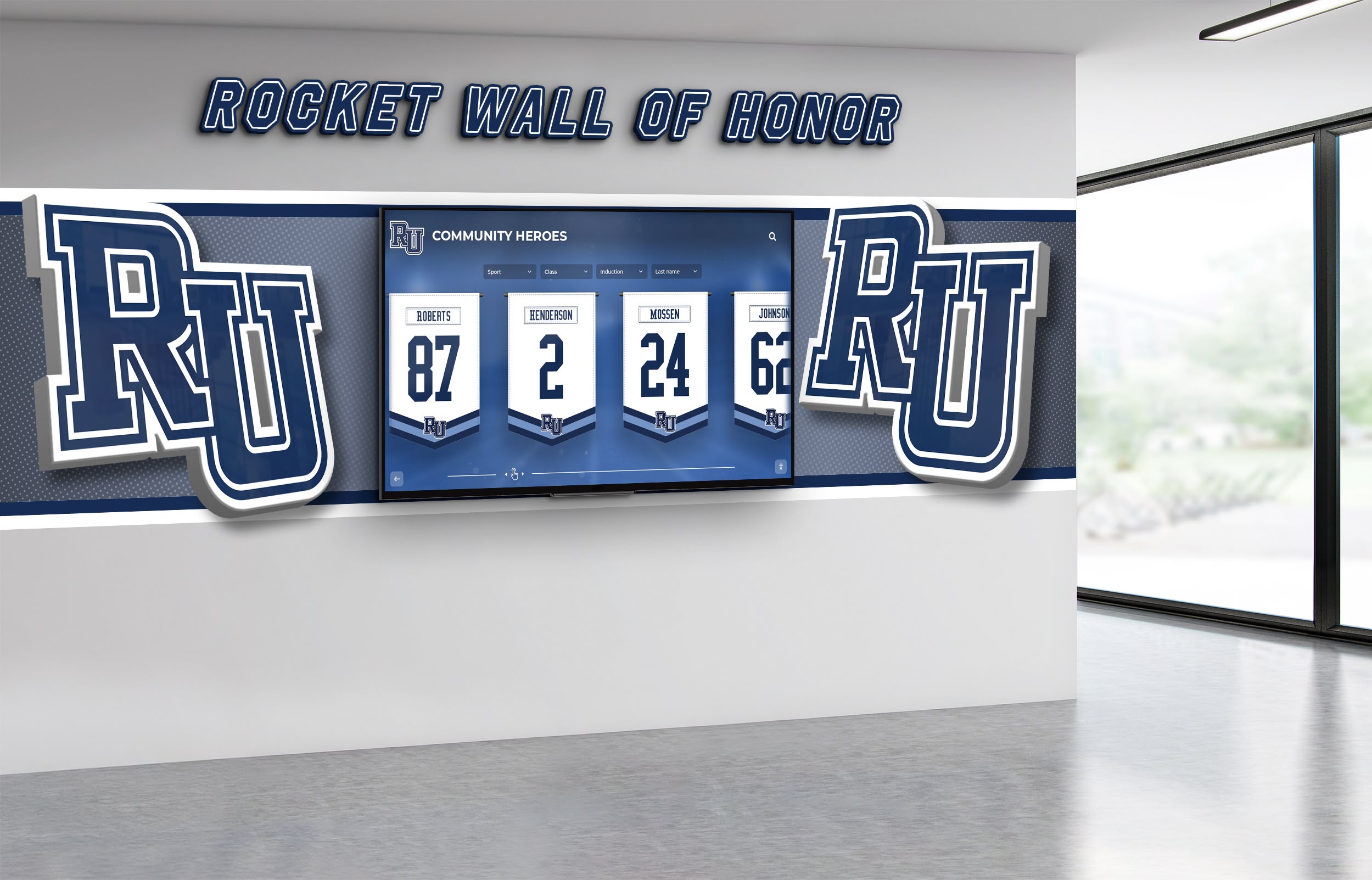Museums have perfected the art of presenting objects, artifacts, and stories in ways that captivate audiences, convey meaning, and preserve heritage for generations. These display principles—refined over centuries and enhanced by modern technology—translate powerfully to schools, universities, organizations, and communities seeking to honor achievements, preserve history, and engage viewers with compelling visual narratives.
Creating museum-quality displays requires more than simply arranging objects behind glass. It demands thoughtful curation that tells coherent stories, strategic design that guides viewer attention, appropriate environmental controls that preserve materials, and increasingly, digital integration that extends engagement beyond physical constraints. Whether showcasing athletic trophies, academic achievements, historical artifacts, or organizational milestones, museum display principles transform collections from storage problems into engagement opportunities.
This comprehensive guide explores proven strategies for creating museum-style displays that educate, engage, and inspire—from fundamental curation principles and design strategies to lighting techniques, preservation considerations, and modern digital integration approaches that extend traditional museum concepts into interactive digital experiences.
Understanding Museum Display Philosophy
Before implementing specific techniques, understanding the philosophical foundations underlying effective museum displays ensures efforts align with proven principles.
The Core Purpose of Museum Displays
Museums view displays not as mere object arrangements but as communication tools conveying specific messages through carefully orchestrated visual experiences. Effective displays accomplish multiple objectives simultaneously:
Educational Communication Museum displays teach audiences about subjects, contexts, and significance that objects alone cannot convey. Labels, graphics, multimedia elements, and spatial relationships work together communicating knowledge in accessible, memorable formats. The best museum displays make complex information digestible while maintaining intellectual rigor.
Emotional Engagement Beyond education, compelling displays create emotional responses connecting viewers personally with subjects. Whether inspiring awe at human achievement, fostering empathy for historical experiences, or building pride in shared heritage, emotional engagement transforms passive viewing into meaningful experiences that audiences remember and share.
Object Preservation Museums balance access with preservation, allowing audiences to view collections while protecting materials from damage, deterioration, and loss. This dual mandate requires careful consideration of environmental factors, security measures, and handling protocols ensuring objects survive for future generations while remaining accessible to current audiences.
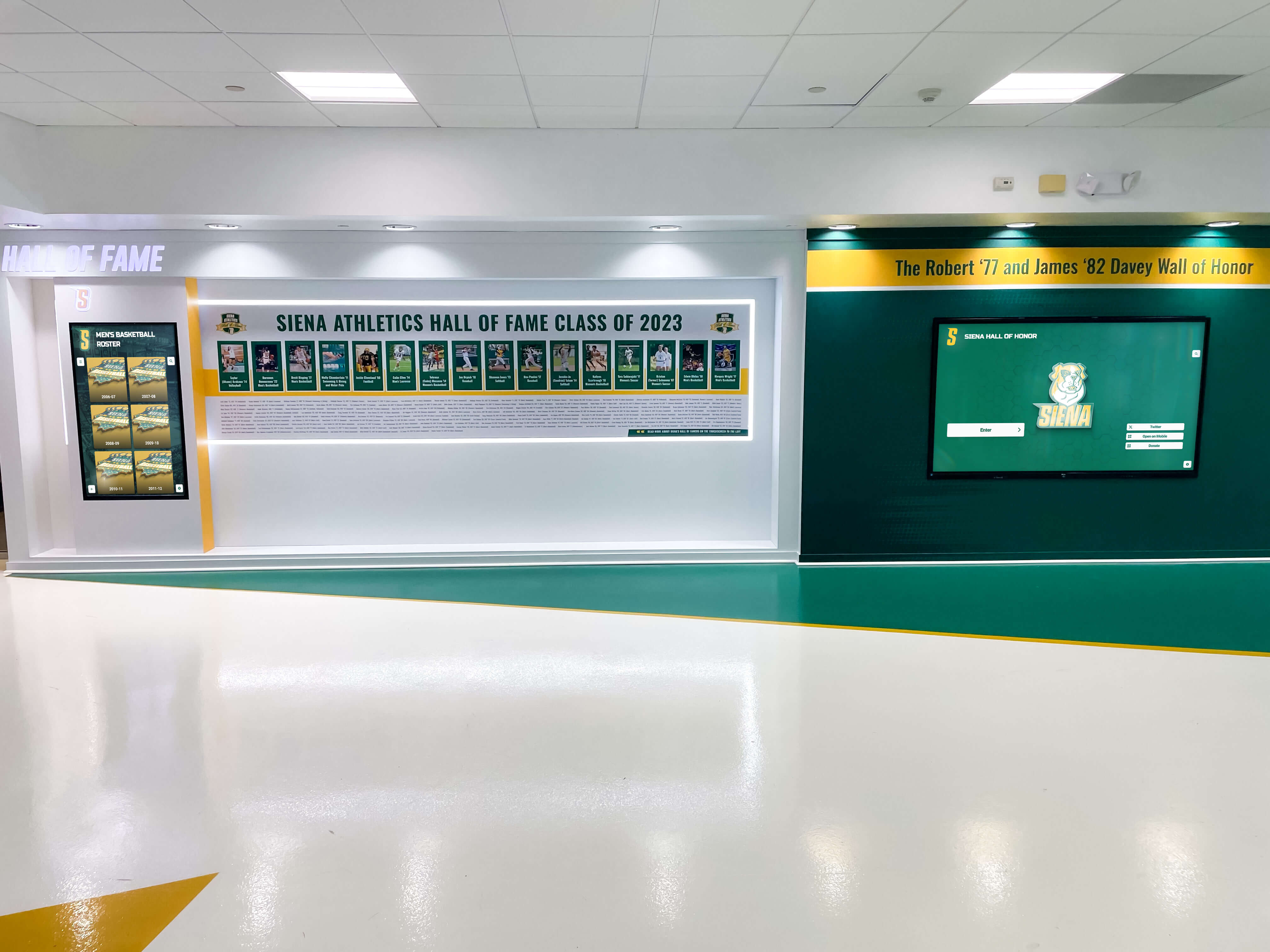
Narrative Construction Individual objects tell limited stories; museum displays construct narratives connecting multiple objects, contexts, and themes into coherent stories greater than component parts. Spatial arrangement, label text, graphic design, and object selection combine creating guided experiences leading audiences through intentional journeys of discovery and understanding.
Institutional Identity Expression Museum displays communicate institutional values, priorities, and identities. Selection of what receives prominence, how stories are told, whose perspectives are included, and what messages are emphasized all reflect and reinforce institutional character while building recognition and credibility.
Museum Display Versus Casual Arrangement
Understanding what distinguishes museum-quality displays from casual collections helps inform design decisions:
Intentional Curation Rather Than Comprehensive Display Museums rarely display entire collections; instead, curators select specific objects supporting defined narratives and educational objectives. This selectivity creates focused, coherent experiences rather than overwhelming viewers with undifferentiated masses of objects. The principle applies whether showcasing championship trophies, historical photographs, or achievement recognition—less is often more when each element receives appropriate attention and context.
Context Provision Rather Than Object Isolation Museum displays provide extensive context helping audiences understand object significance. Labels explain not just what objects are but why they matter, how they were created, who used them, and what broader stories they illuminate. This context transforms objects from curiosities into educational resources and emotional touchpoints.
Professional Presentation Rather Than Utilitarian Storage Museum displays employ professional design principles including strategic lighting highlighting key elements, thoughtful color schemes supporting rather than competing with objects, carefully chosen typography ensuring readability, and spatial arrangements guiding viewer movement and attention. These details create polished, credible presentations reflecting appropriate respect for subjects.
Preservation Considerations Rather Than Access Maximization While making collections accessible, museums implement protective measures including environmental controls regulating temperature, humidity, and light exposure, physical barriers preventing handling damage, security systems protecting against theft or vandalism, and conservation treatments stabilizing deteriorating materials. This preservation consciousness ensures collections remain viewable long-term rather than being destroyed through unrestricted access.
Fundamental Principles of Museum-Style Display Design
Successful museum displays follow established design principles that can be adapted to any context, from major metropolitan museums to school trophy cases.
The Power of Selectivity and Editing
Perhaps the most important museum principle involves rigorous selectivity—displaying fewer objects more effectively rather than attempting comprehensive presentation overwhelming viewers.
Quality Over Quantity Museums recognize that audiences have limited attention and processing capacity. Rather than displaying everything available, effective exhibitions select objects best supporting specific themes, messages, or stories. This editing creates focus allowing individual objects to receive appropriate attention and context rather than becoming lost in visual clutter.
For schools implementing digital trophy displays or traditional recognition walls, this principle suggests rotating featured content regularly rather than attempting to showcase everything simultaneously. Highlight current season achievements, historical milestones, or thematic collections changing quarterly or seasonally, ensuring each featured element receives proper prominence and context.
Thematic Organization Creating Coherence Museums organize displays around clear themes, chronological narratives, or conceptual frameworks helping audiences understand relationships between objects and guiding them through logical progressions. Thematic organization transforms collections from random assortments into coherent stories communicating specific messages.
When creating recognition displays, consider organizational frameworks including chronological progression showing achievement evolution over decades, sport or activity-based sections celebrating specific programs, achievement type organization highlighting championships versus individual records, or thematic collections like “Overcoming Adversity” or “Building Traditions” connecting diverse achievements through common threads.
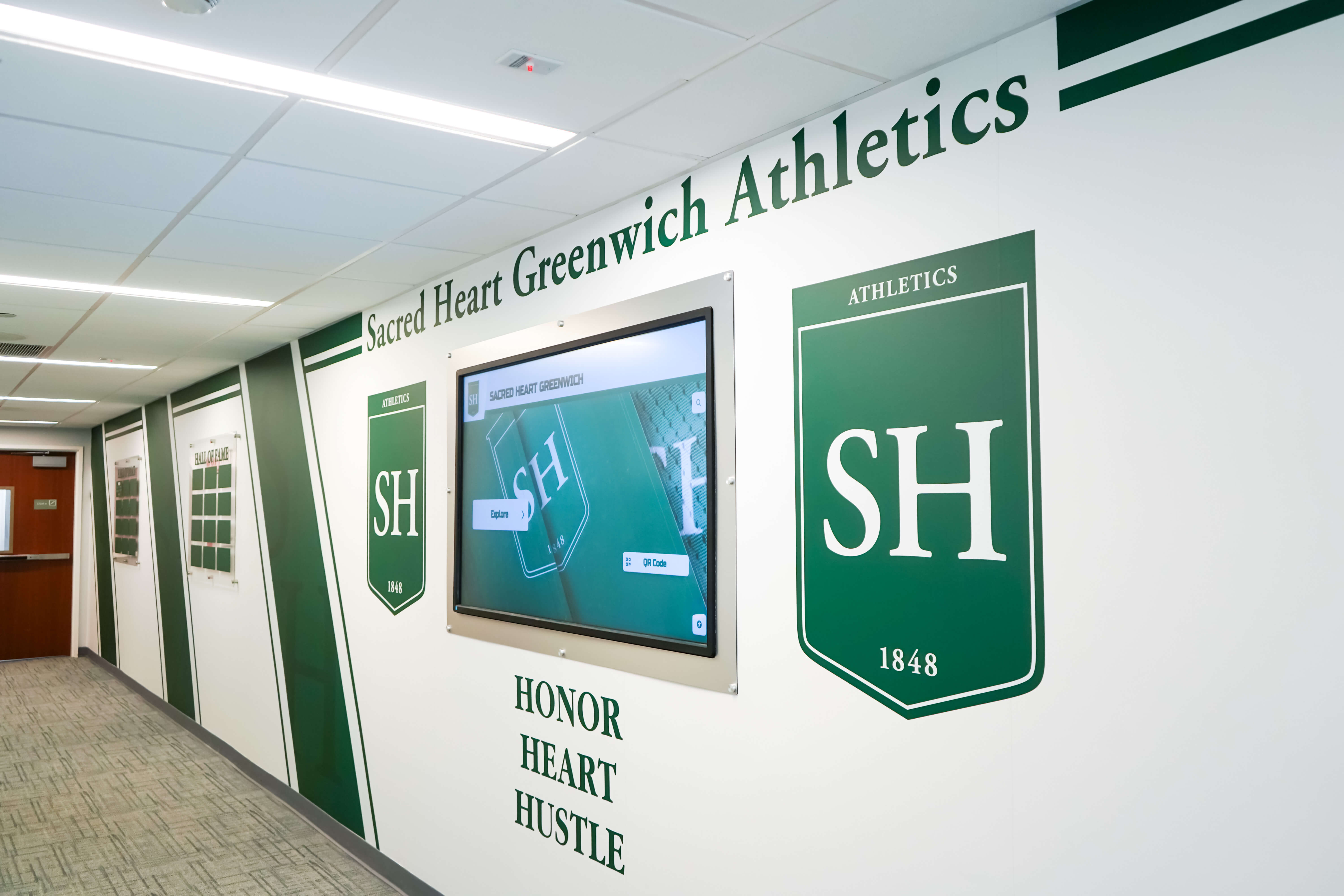
Hierarchical Presentation Guiding Attention Effective museum displays establish clear visual hierarchies directing viewer attention to most important elements first. Size, positioning, lighting, color, and spacing combine creating obvious focal points while supporting elements provide context without competing for attention. This hierarchical approach ensures audiences engage with key messages before potentially getting lost in details.
Implement visual hierarchy through prominent placement of signature achievements in prime viewing locations, strategic lighting drawing attention to featured elements, size variation with major accomplishments receiving larger display allocation, color contrast making key elements visually distinct, and spatial separation preventing visual competition between multiple focal points.
Strategic Use of Space and Sightlines
Museums carefully consider how audiences move through spaces and what they see from different vantage points, designing displays optimizing viewer experiences.
Entrance Impressions Setting Expectations Museum exhibitions carefully design entrance experiences immediately engaging visitors and establishing exhibition themes, tones, and expectations. Strong openings capture attention and motivate continued exploration while clearly communicating what audiences will discover.
For recognition displays, entrance design might feature signature achievements or institutional symbols creating immediate visual impact, clear wayfinding signage explaining navigation and content organization, engaging graphics or headlines communicating display purposes, or featured multimedia elements drawing attention and building anticipation.
Circulation Paths Guiding Movement Museums design intentional circulation paths leading audiences through narratives in specific sequences. Layout, barriers, lighting, and visual cues subtly guide movement ensuring viewers encounter content in optimal order while maintaining natural flow preventing bottlenecks or confusion.
Apply circulation design by creating clear entry and exit points minimizing confusion, implementing logical left-to-right or top-to-bottom reading patterns, using lighting and visual cues drawing attention to intended next viewing points, providing multiple path options for different interest levels or time availability, and ensuring sufficient space for comfortable viewing without crowding.
Viewing Heights and Distances Professional displays consider optimal viewing distances and heights for different content types. Small text requires closer viewing, large objects need viewing distance revealing overall form, and eye-level placement ensures accessibility and engagement. Displays accommodating diverse viewer heights including children and wheelchair users demonstrate inclusive design.
Position key content at 48-60 inch heights (adult eye level standing), provide seating enabling comfortable extended viewing, ensure text readability from intended viewing distances (minimum 1/4 inch letter height per 10 feet distance), place detailed content requiring close inspection at accessible heights, and design vertical arrangements logical for standing viewers.
Label and Interpretive Text Best Practices
Museum labels transform object viewing into educational experiences, providing context, background, and interpretation that objects alone cannot communicate.
Label Hierarchy and Organization Effective museum labeling follows clear hierarchies with different label types serving distinct purposes: main exhibition labels introducing overall themes, section labels explaining specific areas or topics, object labels providing basic identification information, and extended labels offering detailed interpretation for interested viewers. This hierarchy allows audiences to engage at different levels based on interest and available time.
Writing for Accessibility and Engagement Museum labels employ clear, direct writing accessible to diverse audiences while maintaining accuracy and depth. Best practices include active voice making text engaging, second person (“you”) creating personal connections, short sentences and paragraphs ensuring readability, jargon-free language welcoming non-expert audiences, and specific details making abstract concepts concrete.
When creating labels for recognition displays, include essential information (names, dates, achievements), provide context explaining significance, connect to broader institutional stories, acknowledge contributions of individuals and teams, and suggest relevance to current audiences.

Typography and Legibility Professional labels balance aesthetic appeal with practical readability. Font selection prioritizing legibility over decoration, appropriate sizing for intended viewing distances, sufficient contrast between text and backgrounds, line spacing preventing crowding, and consistent formatting creating professional appearance all contribute to effective label design.
Multilingual and Accessible Text Contemporary museums increasingly provide multilingual labeling serving diverse audiences and accessible formats supporting visitors with vision impairments or reading challenges. Digital displays offer particular advantages enabling language selection, adjustable text sizing, audio description options, and screen reader compatibility extending accessibility beyond physical label limitations.
Design Elements Creating Museum-Quality Presentations
Visual design components distinguish professional museum displays from amateur arrangements, creating cohesive, engaging presentations honoring subjects appropriately.
Color Theory and Palette Selection
Strategic color use establishes mood, directs attention, and creates visual coherence supporting rather than overwhelming content.
Neutral Backgrounds Emphasizing Content Museums typically employ neutral background colors—whites, grays, blacks, or subtle earth tones—allowing objects and content to dominate viewer attention rather than competing with vibrant backgrounds. This restraint ensures focus remains on display subjects while creating professional, timeless aesthetics unlikely to appear dated quickly.
Accent Colors Creating Hierarchy While maintaining neutral foundations, strategic accent color use highlights key elements, establishes thematic connections, or provides wayfinding cues. Consistent accent color application throughout exhibitions creates visual rhythm while reinforcing organizational structure.
Institutional Branding Integration For organizational displays, subtle integration of institutional colors creates brand consistency and recognizability without overwhelming content. Schools implementing digital recognition walls can incorporate school colors in backgrounds, graphics, or accent elements connecting displays to broader institutional identity.
Psychological Color Impacts Color psychology influences viewer emotional responses. Blues convey stability, trust, and calm; reds suggest energy, passion, and importance; greens evoke growth, renewal, and balance; and golds/yellows indicate achievement, excellence, and celebration. Strategic color selection supporting intended emotional tones enhances communication effectiveness.
Lighting Strategies Enhancing Visibility and Drama
Lighting may be the single most powerful tool museums employ creating impactful displays, combining practical illumination with dramatic emphasis.
Ambient Versus Accent Lighting Museum lighting employs layered approaches combining ambient lighting providing general illumination throughout spaces and accent lighting creating dramatic emphasis on specific objects or features. This layering ensures overall visibility while directing attention to focal points through brightness contrast.
For physical displays, implement ambient lighting ensuring even, comfortable illumination throughout viewing areas without harsh shadows or excessive brightness. Complement with accent lighting using focused beams highlighting featured trophies, achievements, or text panels, creating 3:1 to 5:1 brightness ratios between accented elements and backgrounds.
Lighting Angles Creating Depth Professional museum lighting employs multiple angles preventing flat, one-dimensional appearances. Front lighting reveals detail and color, side lighting creates depth through shadows, and back lighting creates separation from backgrounds. Combining angles creates dimensional, engaging presentations revealing object characteristics from multiple perspectives.
Color Temperature Considerations Lighting color temperature significantly impacts how displays appear. Cool white lights (4000-5000K) create clean, modern aesthetics suitable for contemporary displays, while warm white lights (2700-3000K) evoke traditional, intimate atmospheres appropriate for historical exhibitions. Consistent color temperature throughout displays prevents distracting color shifts.

Preservation-Conscious Lighting Museums balance visibility with preservation, recognizing that light exposure damages materials over time. LED lighting provides cool, energy-efficient illumination minimizing heat and UV radiation damaging sensitive materials. For valuable historical items, implement lighting controls limiting exposure, use UV-filtering materials, and consider rotation strategies giving materials periodic darkness.
Material Selection and Construction Quality
Physical display construction quality signals respect for subjects while ensuring durability and longevity.
Professional-Grade Materials Museum-quality displays employ durable, attractive materials appropriate for long-term public installations. Options include powder-coated metals resisting corrosion and wear, high-quality woods or wood-look materials, conservation-grade acrylic or glass for protective barriers, commercial-grade fabrics for backgrounds, and professional vinyl or metal lettering for permanent signage.
Attention to Finishing Details Professional fabrication includes clean joinery and seam concealment, smooth, consistent paint or finish application, secure, invisible mounting hardware, straight, level installation, and overall craftsmanship reflecting appropriate quality standards. These details communicate seriousness and permanence appropriate for important subjects.
Modularity Supporting Updates While built for permanence, effective displays incorporate flexibility supporting updates without complete reconstruction. Removable graphics enabling content changes, adjustable mounting systems accommodating different objects, modular panel systems allowing reconfiguration, and accessible wiring supporting technology updates all extend display longevity while maintaining update capability.
Digital Integration in Modern Museum Displays
Contemporary museums increasingly integrate digital technologies extending engagement beyond physical object viewing, creating interactive, multimedia experiences that traditional static displays cannot match.
Interactive Touchscreens Expanding Content Capacity
Digital touchscreens represent one of the most transformative museum technologies, providing unlimited content capacity, engaging interactivity, and multimedia storytelling capabilities.
Unlimited Content Depth Physical displays face inherent space constraints limiting how much information and how many objects can be showcased. Interactive touchscreen systems eliminate these constraints, providing access to thousands of records, photographs, documents, and multimedia elements through intuitive navigation. This capacity enables comprehensive collections while maintaining focused physical presentations.
Museums display signature objects physically while providing touchscreen access to complete collections, contextual information, related materials, and research databases. This hybrid approach maximizes both physical impact and content comprehensiveness.
Multimedia Storytelling Digital platforms integrate diverse media types creating richer narratives than text and objects alone provide. Video interviews with subjects or experts, audio recordings of speeches, performances, or oral histories, photograph galleries showing subjects from multiple perspectives, animated timelines illustrating chronological developments, and interactive maps connecting geographic relationships all enhance understanding and engagement.
For schools creating athletic recognition displays, multimedia integration might include championship game highlight videos, coach interview recordings, photo galleries documenting seasons, statistical visualizations comparing performances, and athlete profile videos connecting past achievers with current students.
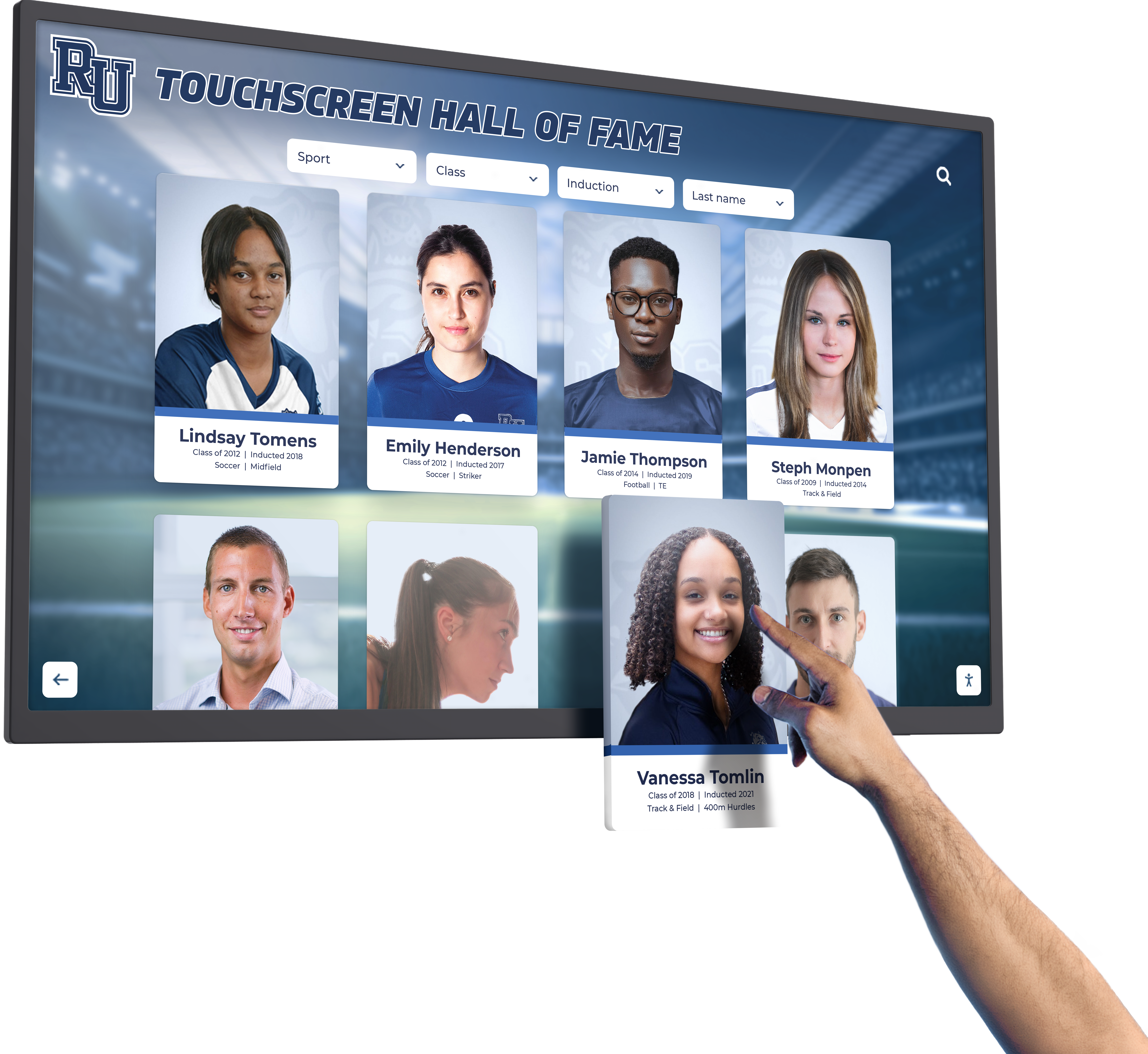
Searchable Databases Enabling Discovery Digital displays transform passive viewing into active exploration through powerful search functionality. Visitors locate specific individuals, dates, or subjects instantly, browse organized categories matching interests, filter results by multiple criteria, and discover unexpected connections through related content suggestions. This interactivity dramatically increases engagement duration and personal relevance compared to static displays.
Regular Updates Maintaining Currency Cloud-based content management systems enable easy updates ensuring displays remain current. New achievements appear immediately, historical information expands continuously, featured content rotates keeping displays fresh, corrections happen quickly, and seasonal or thematic highlighting responds to events or interests—all without physical reconstruction or reinstallation.
Augmented Reality and Immersive Technologies
Emerging technologies enable entirely new museum experience categories blending physical and digital elements.
AR Overlays Enhancing Physical Displays Augmented reality applications allow visitors to point smartphones or tablets at physical objects viewing overlaid digital content including object origin stories and maker information, usage demonstrations or historical context, related objects and collections, expert commentary and analysis, and three-dimensional object rotation or examination. AR extends physical display capabilities while maintaining tangible object presence.
Virtual Exhibition Access Digital platforms enable museum experiences independent of physical visits through web-based virtual exhibitions, 3D environment tours, VR headset immersive experiences, and mobile app guided explorations. These approaches dramatically extend audience reach beyond those able to visit physical locations, serving remote alumni, disabled visitors unable to navigate physical spaces, or researchers requiring repeated detailed examination.
Interactive Projection Mapping Advanced museums employ projection technology creating dynamic displays on physical surfaces. Architectural features become projection screens, object surfaces gain animated overlays, walls transform with changing imagery, and spaces adapt to different themes or programs. While representing significant technical investment, projection mapping creates memorable, flexible exhibitions particularly effective for temporary displays or special events.
Digital Asset Management Supporting Curation
Behind compelling displays lie robust content management systems organizing and preserving institutional collections.
Centralized Collection Documentation Comprehensive digital asset management consolidates all collection information, images, and related materials in searchable databases. These systems track object locations and conditions, record provenance and acquisition information, document conservation treatments and needs, manage rights and permissions, and link related materials and research. This organization supports both current display planning and long-term collection stewardship.
Metadata and Taxonomies Effective digital collections employ consistent metadata standards and controlled vocabularies enabling powerful search and discovery. Established fields including creator/artist, date and location, materials and techniques, dimensions and conditions, subject terms and categories, and relationships to other objects all facilitate organization and retrieval supporting exhibition development and research.
Solutions like Rocket Alumni Solutions provide purpose-built platforms specifically designed for institutional recognition and heritage preservation, combining intuitive content management with engaging display interfaces optimized for schools, universities, and organizations.
Creating Museum-Style Displays in Educational Settings
Educational institutions increasingly apply museum display principles creating professional recognition programs honoring achievements while preserving institutional heritage.
Athletic Achievement Displays
Sports recognition represents one of the most common museum-style display applications in educational settings.
Trophy and Award Presentation Traditional trophy cases often become overcrowded, disorganized showcases diminishing rather than celebrating achievements. Museum approaches to trophy display include rigorous selectivity showcasing signature accomplishments, thematic organization by sport, era, or achievement type, contextual information explaining significance, and multimedia elements bringing victories to life through video highlights and detailed statistics.
Schools implementing digital trophy case systems apply museum principles through unlimited capacity for comprehensive recognition, rich storytelling beyond basic trophy identification, searchable databases enabling personalized discovery, and professional presentation honoring achievements appropriately.
Record Board Evolution Traditional painted record boards serve important functions but face update challenges and space limitations. Museum-inspired approaches maintain traditional boards as historical elements while adding digital capacity, incorporate professional graphics and typography, provide contextual information about record significance, and integrate photographs and athlete profiles creating personal connections.
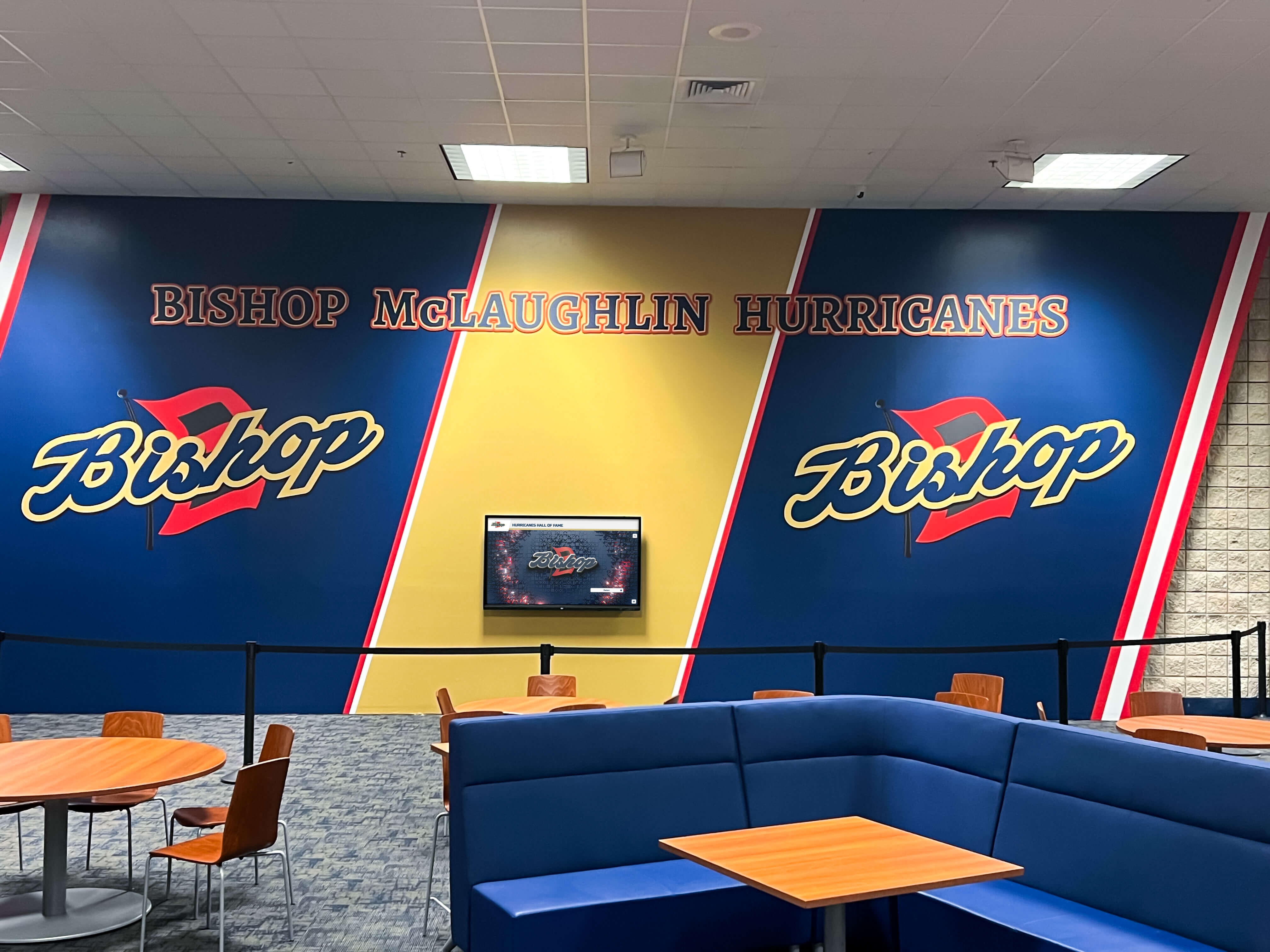
Team History Documentation Comprehensive team history preservation employs museum documentation principles including systematic photography of team photos, uniforms, and equipment, oral history recordings with coaches and alumni, season narrative documentation in text and multimedia, statistical record keeping and visualization, and championship season detailed documentation. This comprehensive approach transforms team histories from fading memories into preserved institutional assets.
Academic Recognition Displays
While athletic achievement often receives prominent display, museum principles apply equally to academic excellence recognition.
Scholar and Achievement Showcases Academic recognition displays can rival athletic presentations when applying professional curation including valedictorian and top scholar recognition across decades, academic competition championship documentation, scholarship recipient and award winner celebration, research and creative work exhibitions, and graduate achievement and career success highlighting. These displays demonstrate institutional commitment to comprehensive excellence recognition across all domains.
Program History and Evolution Academic program displays document institutional educational mission evolution through curriculum development timelines, distinguished faculty recognition, notable alumni career achievements, program accreditation and recognition, and innovative teaching or research initiatives. These narratives communicate institutional academic values while inspiring current students.
Historical Heritage Preservation
Many educational institutions possess rich histories deserving museum-quality preservation and presentation.
Founding and Development Narratives Institutional history displays employ chronological organization showing development from founding to present, founder and early leader recognition, facility evolution documentation through photographs and plans, tradition origin stories and evolution, and significant milestone and anniversary celebration. These narratives connect current community members with institutional heritage while preserving institutional memory for future generations.
Alumni Achievement Recognition Hall of fame programs honor distinguished graduates through clear selection criteria and transparent processes, comprehensive biographical documentation, achievement context and significance explanation, connection to current institutional values and priorities, and regular induction ceremonies generating ongoing engagement. Professional presentation demonstrates appropriate respect for alumni accomplishments while inspiring current students.
Practical Implementation Strategies
Creating museum-quality displays requires systematic planning balancing ambition with available resources and expertise.
Planning and Assessment Phase
Successful display projects begin with thorough planning establishing clear objectives and realistic scopes.
Needs Assessment and Goal Definition Define specific display purposes including primary audiences (students, alumni, visitors, donors), key messages or stories to communicate, existing materials requiring display or preservation, space constraints and opportunities, and success metrics for evaluation. Clear goals guide subsequent decisions preventing scope creep while ensuring efforts serve identified needs.
Resource Inventory Assess available resources including budget for materials, fabrication, and technology, staff time and expertise, physical space and locations, existing collection materials, and potential partnerships or volunteer support. Realistic resource assessment prevents overcommitment while identifying opportunities for collaboration or phased implementation.
Space Analysis and Circulation Planning Evaluate potential display locations considering traffic patterns and visibility, viewing distances and sightlines, environmental conditions (lighting, temperature, humidity), installation requirements and constraints, and accessibility for diverse visitors. Optimal location selection significantly impacts display effectiveness and audience reach.

Design Development Process
Systematic design development ensures cohesive results aligned with objectives and constraints.
Concept Development and Sketching Begin with rough concepts exploring alternative approaches including layout and spatial organization options, content selection and hierarchy, thematic frameworks and narratives, technology integration opportunities, and aesthetic directions and design treatments. Early concept exploration identifies promising directions before significant resource investment.
Detailed Design and Specifications Refine selected concepts into detailed designs specifying exact dimensions and materials, construction methods and fabrication requirements, equipment and technology needs, graphic design and typography, lighting systems and electrical requirements, and installation procedures and schedules. Detailed specifications enable accurate cost estimation and ensure fabrication meets expectations.
Budget Estimation and Value Engineering Develop realistic cost estimates including materials and fabrication, technology and equipment, installation labor, graphic design and content development, project management and coordination, and contingency for unforeseen issues. Value engineering identifies cost reduction opportunities that maintain quality and effectiveness when budgets constrain ideal approaches.
Fabrication and Installation
Quality fabrication and installation determine whether designs translate into effective realities.
Vendor Selection and Management Choose fabricators and contractors based on relevant experience and portfolio quality, technical capabilities and equipment, communication and project management approaches, pricing competitiveness, and schedule reliability. Clear contracts, regular communication, and quality checkpoints ensure projects proceed smoothly.
Content Development and Production Allocate sufficient time and resources for high-quality content including professional photography of objects and subjects, compelling copywriting and editing, graphic design and layout, multimedia production (video, audio, animation), and accuracy verification and fact-checking. Content quality determines display effectiveness as much as physical design quality.
Installation Coordination Professional installation requires careful coordination including site preparation and protection, delivery scheduling and staging, skilled installation crews, testing and quality assurance, and final adjustments and detailing. Proper installation ensures displays function as designed while meeting professional quality standards.
Maintenance and Evolution
Completed displays require ongoing attention ensuring continued effectiveness and relevance.
Regular Maintenance Schedules Establish routine maintenance including display cleaning and inspection, lighting replacement and adjustment, technology updates and backups, content currency review, and damage or deterioration monitoring. Regular maintenance prevents minor issues from becoming major problems while demonstrating ongoing commitment to quality.
Content Updates and Refreshment Plan systematic content updates including regular rotation of featured elements, addition of new achievements or materials, correction of errors or outdated information, seasonal or thematic highlighting, and expansion addressing newly discovered materials. Regular updates maintain audience interest while ensuring displays remain current and relevant.
Performance Assessment and Improvement Monitor display effectiveness through visitor observation and feedback, usage analytics for digital elements, achievement of defined objectives, stakeholder satisfaction assessment, and identification of improvement opportunities. Data-informed improvements ensure displays continue serving intended purposes effectively.
Conclusion: Transforming Collections Into Compelling Stories
Museum-style displays transform collections from storage challenges into powerful communication tools that educate, inspire, and preserve institutional heritage. By applying professional curation principles, employing strategic design approaches, implementing appropriate technology integration, and committing to ongoing maintenance and evolution, organizations of any size can create displays rivaling professional museum quality.
The transition from casual arrangement to museum-quality presentation requires investment in planning, design, and execution—but the results justify efforts through dramatically enhanced engagement, appropriate recognition of important achievements, preserved institutional memory, and strengthened community connections. Whether showcasing athletic excellence, academic achievement, organizational milestones, or historical heritage, museum display principles ensure subjects receive recognition reflecting their significance while creating experiences audiences find compelling and memorable.
Educational institutions ready to elevate recognition and heritage preservation can implement museum principles incrementally, beginning with highest-priority displays and expanding systematically as resources and expertise grow. Modern digital platforms like Rocket Alumni Solutions make museum-quality interactive displays accessible even to institutions without extensive technical resources or museum expertise, providing intuitive tools for creating engaging, professional presentations that honor past achievements while inspiring future excellence.
Every institution has stories worth telling professionally. Every achievement deserves appropriate recognition. Every artifact holds potential for educational impact and emotional connection when presented through museum-quality curation and design. Start applying these principles today, transforming your collections from forgotten storage into celebrated heritage inspiring everyone who encounters your institutional story.
